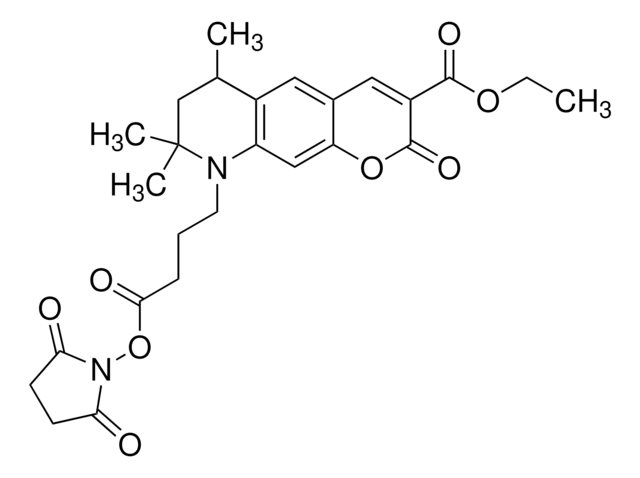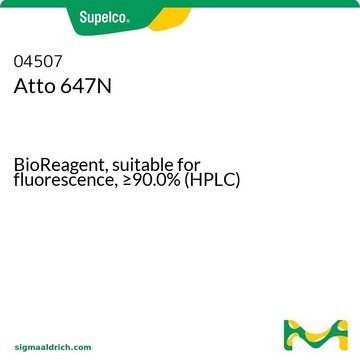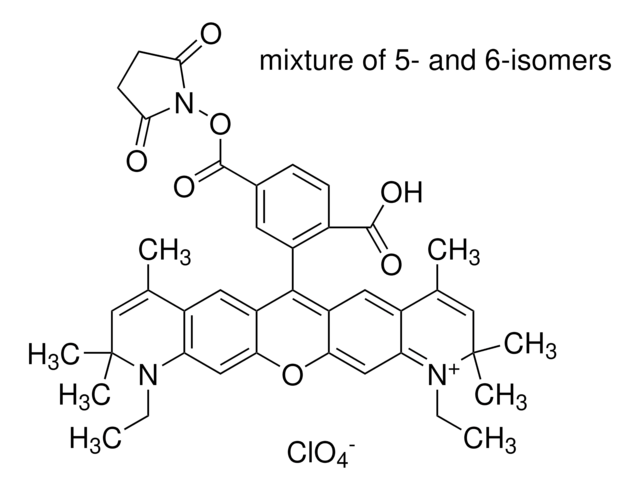Key Documents
41698
Atto 488 NHS ester
BioReagent, suitable for fluorescence, ≥90% (HPLC)
Synonim(y):
Atto 488
About This Item
Polecane produkty
linia produktu
BioReagent
Poziom jakości
Próba
≥90% (HPLC)
≥90% (degree of coupling)
producent / nazwa handlowa
ATTO-TEC GmbH
λ
in methanol: water (1:1) (with 0.1% perchloric acid)
absorpcja UV
λ: 501-507 nm Amax
przydatność
suitable for fluorescence
temp. przechowywania
−20°C
Powiązane kategorie
Opis ogólny
Zastosowanie
Cechy i korzyści
- Strong Absorption.
- High Fluorescence quantum yield.
- High Photostability.
- Excellent water solubility.
Informacje prawne
produkt powiązany
Kod klasy składowania
11 - Combustible Solids
Klasa zagrożenia wodnego (WGK)
WGK 3
Środki ochrony indywidualnej
Eyeshields, Gloves, type N95 (US)
Certyfikaty analizy (CoA)
Poszukaj Certyfikaty analizy (CoA), wpisując numer partii/serii produktów. Numery serii i partii można znaleźć na etykiecie produktu po słowach „seria” lub „partia”.
Masz już ten produkt?
Dokumenty związane z niedawno zakupionymi produktami zostały zamieszczone w Bibliotece dokumentów.
Klienci oglądali również te produkty
Produkty
Fluorescent Labeling of Peptides
Pochodne chromogeniczne i fluorogeniczne są nieocenionymi narzędziami w biochemii, mającymi liczne zastosowania w enzymologii, chemii białek, immunologii i histochemii.
Nasz zespół naukowców ma doświadczenie we wszystkich obszarach badań, w tym w naukach przyrodniczych, materiałoznawstwie, syntezie chemicznej, chromatografii, analityce i wielu innych dziedzinach.
Skontaktuj się z zespołem ds. pomocy technicznej







